Major geopolitical events play a crucial role in shaping public opinion trends, influencing how individuals perceive nations and policies. In 2023, these trends reveal significant shifts marked by rising nationalism, increased political polarization, and evolving attitudes towards pressing issues like public perception, reflecting the complex interplay between global challenges and domestic concerns.
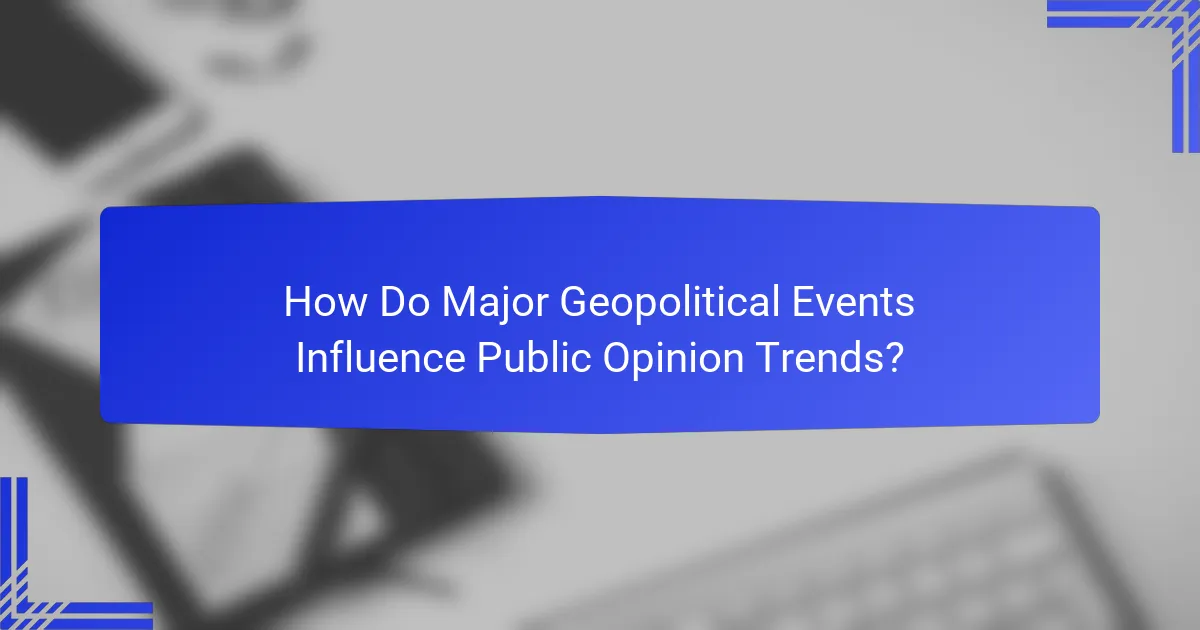
How Do Major Geopolitical Events Influence Public Opinion Trends?
Major geopolitical events significantly shape public opinion trends by altering perceptions, attitudes, and sentiments towards nations and policies. These events can lead to shifts in national identity, trust in government, and international relations, often reflected in polling data and media narratives.
Impact of the Ukraine Conflict
The Ukraine conflict has profoundly influenced public opinion across Europe and North America, with many citizens expressing increased support for military aid to Ukraine. Surveys indicate that approval ratings for government responses have risen, particularly among younger demographics who prioritize democratic values.
Additionally, the conflict has heightened awareness of energy security issues, prompting discussions about reducing dependency on Russian energy sources. This shift has led to increased public backing for renewable energy initiatives and diversification of energy supplies.
Effects of Brexit on European Sentiment
Brexit has created a notable divide in public sentiment within the European Union, with varying opinions on national sovereignty and economic stability. In the UK, public opinion has fluctuated, with some citizens expressing regret over the decision, while others remain firm in their belief that leaving the EU was beneficial.
In continental Europe, Brexit has sparked debates about the future of the EU, with some member states advocating for reforms to prevent further exits. Public sentiment often reflects concerns about economic repercussions and the potential for increased nationalism.
Public Response to U.S.-China Relations
Public opinion regarding U.S.-China relations has become increasingly polarized, especially in the context of trade and security issues. Many Americans view China as a strategic competitor, leading to heightened support for policies aimed at countering Chinese influence globally.
In contrast, some segments of the population emphasize the importance of cooperation on global challenges such as climate change and public health. This duality in public sentiment illustrates the complexity of international relations and the need for nuanced policy approaches that consider both competition and collaboration.
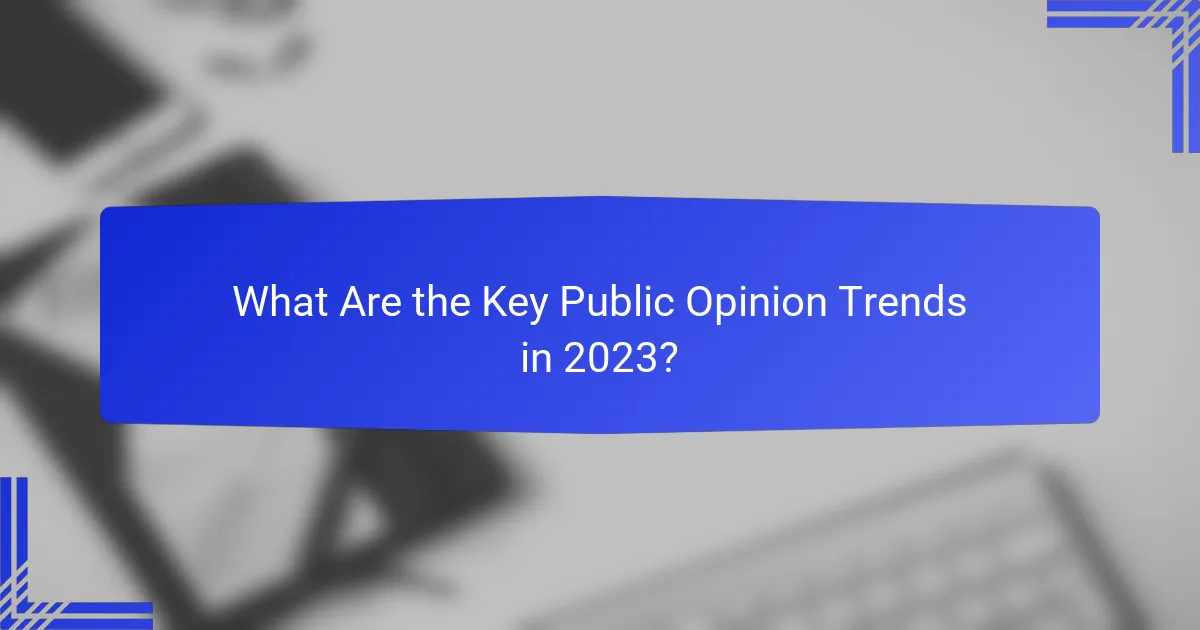
What Are the Key Public Opinion Trends in 2023?
In 2023, public opinion trends reflect significant shifts influenced by geopolitical events, with notable increases in nationalism, political polarization, and changing attitudes toward climate change. These trends indicate how citizens are responding to global challenges and domestic issues, shaping the political landscape in various regions.
Rise of Nationalism in Europe
Nationalism has gained momentum in Europe, driven by economic uncertainties and immigration concerns. Many citizens express a preference for policies that prioritize national interests over international cooperation, leading to stronger support for right-wing parties across several countries.
For example, countries like Hungary and Poland have seen a resurgence of nationalist rhetoric, which resonates with voters who feel threatened by globalization. This trend may result in increased tensions within the European Union, as member states grapple with differing priorities and values.
Increased Polarization in U.S. Politics
The political landscape in the United States has become increasingly polarized, with sharp divisions between Democrats and Republicans on key issues. Public opinion surveys indicate that many Americans hold strong, often opposing views on topics such as healthcare, immigration, and gun control.
This polarization is reflected in social media discourse and public demonstrations, where individuals are more likely to align with extreme viewpoints. As a result, bipartisan cooperation has become more challenging, complicating legislative processes and governance.
Shifts in Attitudes Toward Climate Change
Public opinion on climate change has shifted significantly, with growing recognition of its urgency. Many individuals now view climate action as a critical priority, influenced by extreme weather events and scientific reports highlighting the consequences of inaction.
Surveys show that a substantial portion of the population supports government initiatives aimed at reducing carbon emissions and investing in renewable energy. However, there remains a divide, with some groups skeptical of climate policies, often citing economic concerns or questioning scientific consensus.
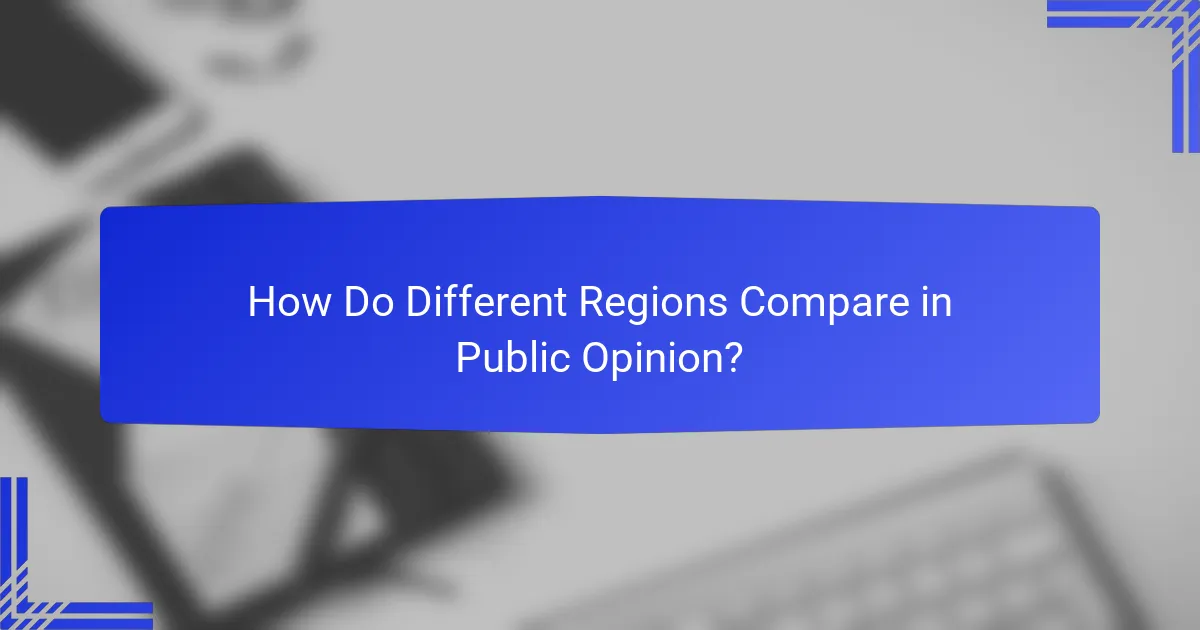
How Do Different Regions Compare in Public Opinion?
Public opinion varies significantly across regions, influenced by cultural, economic, and political factors. Understanding these differences is crucial for analyzing how geopolitical events shape perceptions and attitudes globally.
North America vs. Europe on Immigration
North America and Europe exhibit contrasting views on immigration, shaped by their unique historical contexts and current challenges. In North America, particularly the United States, public opinion tends to be more polarized, with debates often focusing on border security and economic impacts. In contrast, many European countries grapple with integration issues and humanitarian responsibilities, leading to a more nuanced public discourse.
Public sentiment in North America often reflects concerns about job competition and national security, while European perspectives frequently emphasize human rights and the benefits of cultural diversity. For instance, surveys indicate that while a significant portion of Americans may favor stricter immigration policies, many Europeans support pathways to citizenship for refugees.
Asian Perspectives on Global Trade
Asian countries generally view global trade as a vital component of economic growth, but opinions vary widely based on local economic conditions and trade relationships. Nations like China and Japan often advocate for free trade agreements, seeing them as essential for maintaining competitiveness in the global market. Conversely, countries with emerging economies may express concerns about the impacts of globalization on local industries.
Public opinion in Asia can shift rapidly in response to geopolitical tensions, such as trade wars or tariffs. For example, during recent trade disputes, sentiment in countries like South Korea has fluctuated, reflecting both support for domestic industries and the desire for continued international cooperation.
Middle Eastern Views on Western Influence
In the Middle East, public opinion on Western influence is complex and often divided. Many people view Western policies through the lens of historical interventions and current geopolitical strategies, leading to skepticism about intentions. This skepticism is particularly pronounced in countries with a history of conflict involving Western nations.
However, there is also a segment of the population that appreciates Western culture and economic partnerships. For instance, younger generations in urban areas may seek Western education and technology, balancing traditional values with modern aspirations. Understanding these dual perspectives is essential for navigating public sentiment in the region.
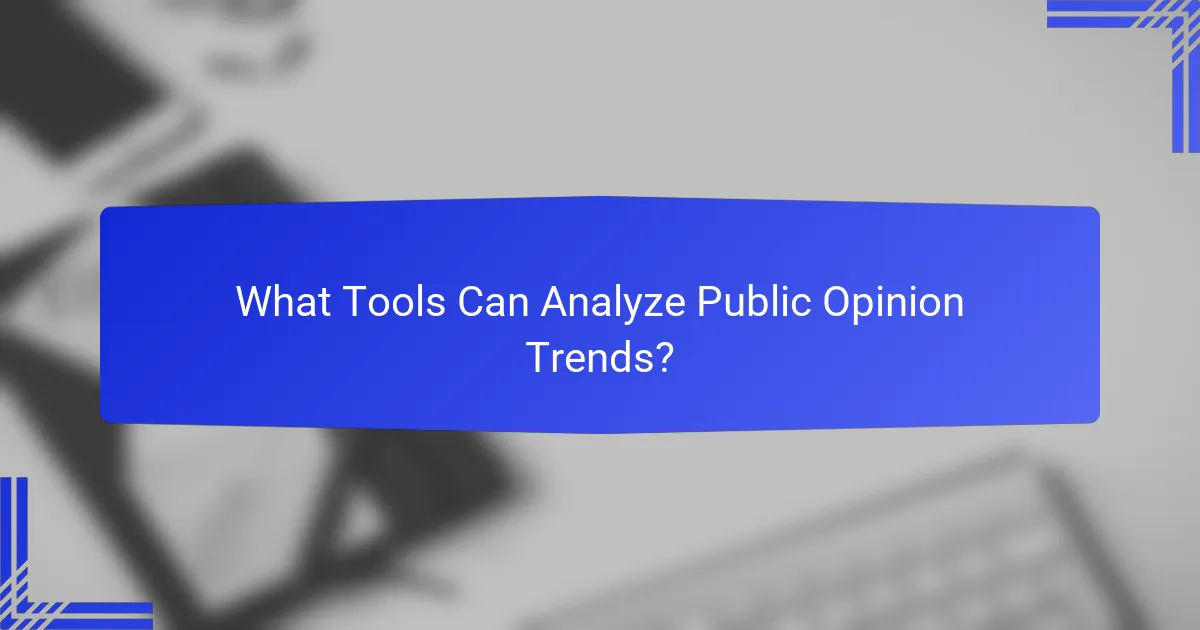
What Tools Can Analyze Public Opinion Trends?
Analyzing public opinion trends requires a combination of tools that can capture, interpret, and visualize data effectively. Key tools include social media analytics, survey platforms, and data visualization software, each offering unique insights into public sentiment regarding major geopolitical events.
Utilizing Social Media Analytics
Social media analytics tools track public sentiment by analyzing posts, comments, and interactions across platforms like Twitter, Facebook, and Instagram. These tools can provide real-time insights into how events are perceived, often revealing trends before traditional media reports.
Consider using tools such as Hootsuite or Brandwatch, which can help you monitor specific keywords or hashtags related to geopolitical events. This allows for a nuanced understanding of public opinion shifts, especially during crises or major announcements.
Survey Platforms like Pew Research
Survey platforms, such as Pew Research Center, conduct comprehensive studies that gauge public opinion on various issues, including geopolitical events. These surveys often include demographic breakdowns, providing context to the data and helping identify trends across different population segments.
When utilizing survey data, ensure you consider the sample size and methodology, as these factors significantly impact the reliability of the results. Regularly updated surveys can help track changes in public sentiment over time, making them valuable for longitudinal studies.
Data Visualization Tools for Trend Analysis
Data visualization tools like Tableau or Google Data Studio transform complex datasets into accessible visual formats, making trends easier to identify and communicate. These tools can illustrate changes in public opinion over time, allowing for quick comparisons and insights.
When creating visualizations, focus on clarity and simplicity. Use charts and graphs that highlight key trends without overwhelming the viewer with excessive detail. This approach ensures that stakeholders can quickly grasp the implications of public opinion data on geopolitical events.
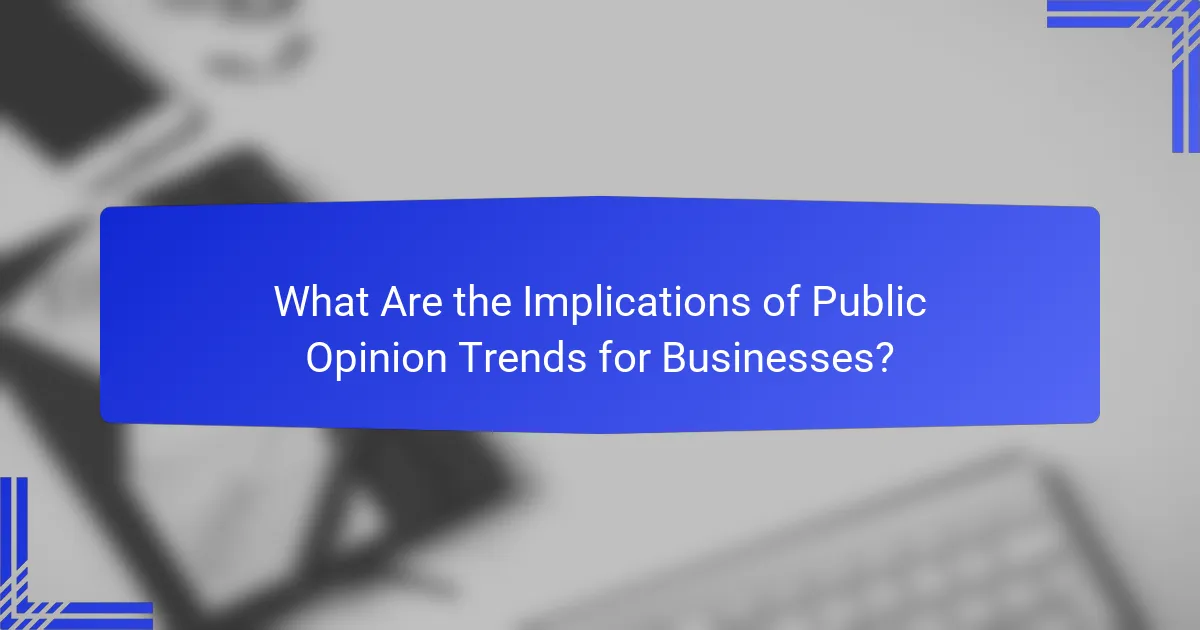
What Are the Implications of Public Opinion Trends for Businesses?
Public opinion trends significantly influence business strategies, as they reflect consumer sentiment and preferences. Understanding these trends helps companies align their offerings and marketing approaches with the evolving expectations of their target audience.
Adapting Marketing Strategies
Businesses must adapt their marketing strategies to resonate with current public opinion. This can involve shifting messaging to address societal concerns or highlighting corporate social responsibility initiatives. For example, brands that prioritize sustainability may see increased engagement in markets where environmental issues are a priority.
Utilizing data analytics to track sentiment changes can guide businesses in real-time adjustments. Companies should consider conducting regular surveys or monitoring social media trends to stay attuned to public perceptions and preferences.
Understanding Consumer Behavior Shifts
Public opinion trends can lead to significant shifts in consumer behavior, affecting purchasing decisions and brand loyalty. For instance, during geopolitical events, consumers may gravitate towards brands that demonstrate solidarity or ethical practices. This shift can result in a preference for local products over international ones, depending on the context.
To effectively respond, businesses should invest in market research to identify emerging consumer values and preferences. Regularly analyzing customer feedback and engagement metrics can help companies stay ahead of these shifts and adjust their offerings accordingly.
